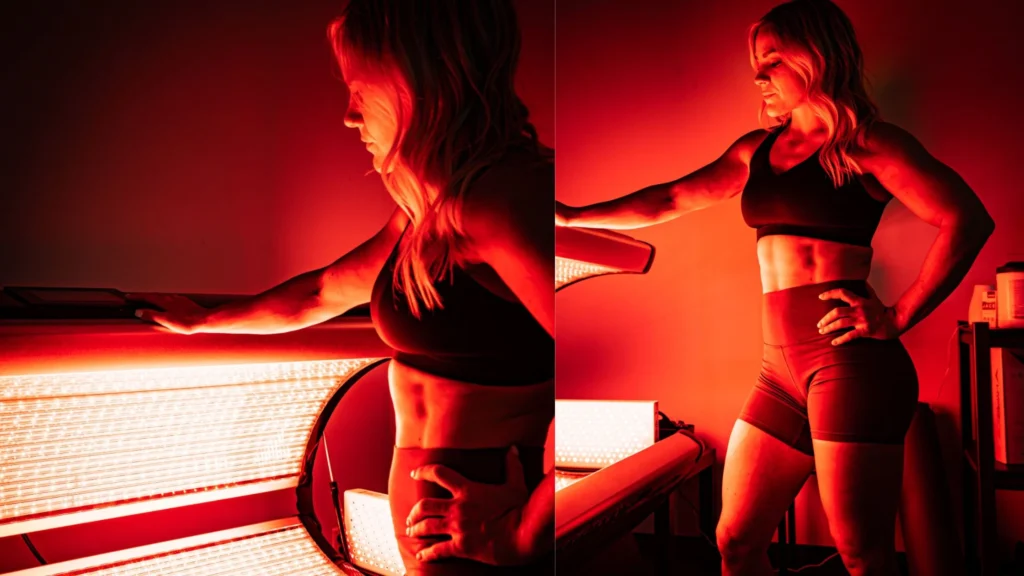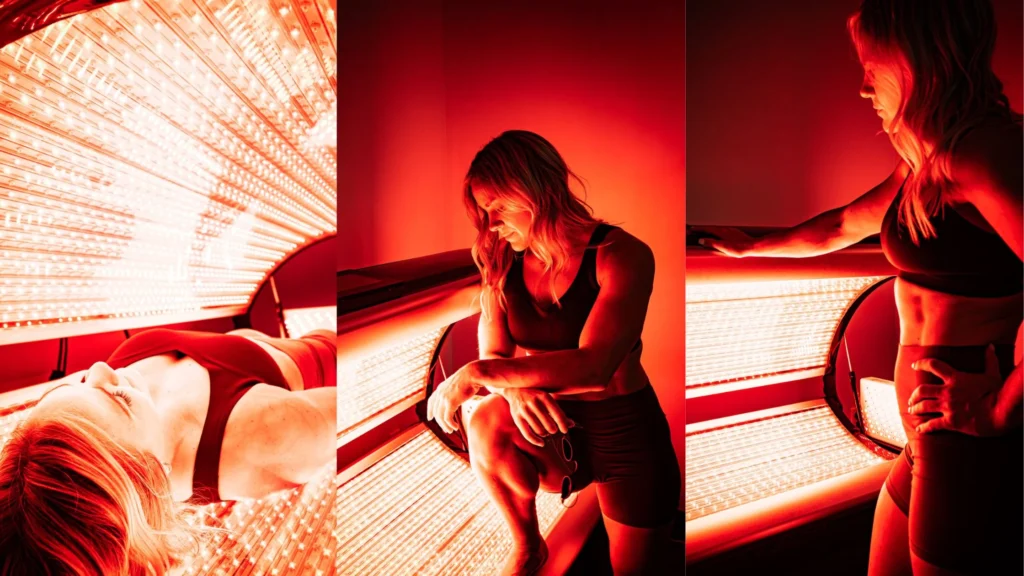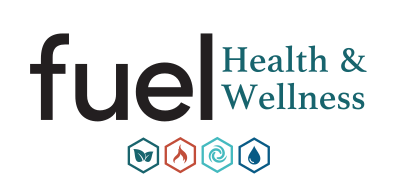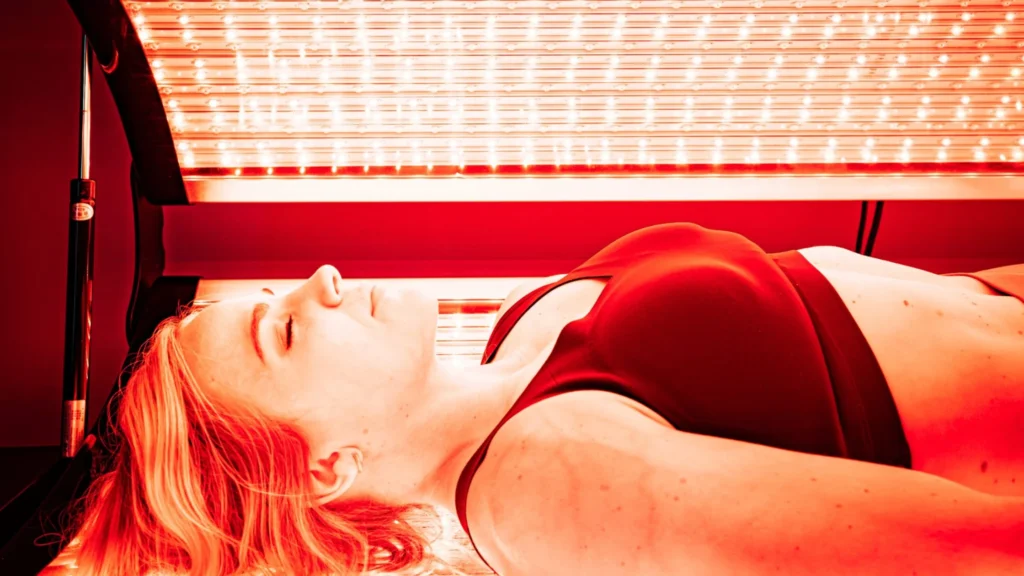Red light therapy is emerging as a powerful non-invasive treatment that uses low-level wavelengths of red and near-infrared light to stimulate cellular repair and reduce inflammation. In Grand Rapids, this therapy is gaining popularity among patients seeking improved recovery, pain relief, skin rejuvenation, and overall wellness to fuel health & wellness. This article provides an in-depth overview of red light therapy, the process of your first appointment, potential outcomes and benefits, cost and insurance considerations, and how to maintain an ongoing therapeutic relationship. By understanding these critical components, you can enhance your treatment journey and maximize the benefits of red light therapy.
In recent years, scientific research has shown that red light therapy may enhance mitochondrial activity and boost adenosine triphosphate (ATP) production. This energy boost helps repair damaged cells and supports overall tissue recovery. Red light therapy is widely applied in sports performance clinics, physical therapy practices, and wellness centers such as Fuel Health & Wellness in Grand Rapids. Whether you are recovering from an injury, managing chronic inflammation, or looking for non-invasive anti-aging treatments, red light therapy represents a promising addition to your care plan.
This comprehensive guide deep-dives into every step from the initial consultation to ongoing treatment, ensuring that patients are well-prepared for their red light therapy session and fully informed about its potential health benefits.
Prepare for Your Initial Appointment Experience – What You Need to Know

Your first appointment for red light therapy in Grand Rapids is both exciting and informative, setting the stage for a successful treatment plan. The initial experience is designed to help you understand the therapy’s fundamentals, discuss your medical history, and determine whether red light therapy Grand Rapids is the right solution for your needs.
What to Expect During Your Initial Consultation?
At your first meeting, your therapist or healthcare provider will review your medical history, ask detailed questions about your symptoms, and discuss previous treatments. The conversation helps ensure that red light therapy can safely complement any existing therapies. In many clinics, such as at Fuel Health & Wellness, the physical examination may also include measurements of skin condition, inflammation markers, and even cardiovascular indicators to establish a baseline.
Common questions include detailed queries about current pain levels, recent injuries, or chronic conditions like arthritis. Additionally, you might be asked to complete a questionnaire designed to capture your overall health and lifestyle, enabling the provider to customize the therapy session to your individual needs. This personalized approach not only optimizes treatment outcomes but also fosters a trusting relationship with your care team.
Before the appointment, many clinics advise patients to avoid exposure to excessive sunlight or other forms of light therapy that could alter skin sensitivity. Bringing medical records, a list of current medications, and previous treatment notes can make the process smoother and ensure that your provider has all the necessary information to start a successful treatment regimen. To learn how preparation and session frequency affect outcomes, explore How Many Red Light Therapy Sessions Do You Need for Results?
What Happens During Your First Red Light Therapy Session – A Step-by-Step Breakdown
Your initial red light therapy session begins by familiarizing you with the treatment area and the equipment. The process is straightforward and generally painless, tailored to your comfort and treatment goals.
How is the Session Conducted?
Red light therapy sessions typically start with a brief explanation of the device’s functionality. The clinical staff will demonstrate how the light-emitting panels work, the specific wavelengths used, and how these wavelengths penetrate the skin to influence cellular processes. At Fuel Health & Wellness and similar centers, sessions are conducted in a designated treatment room equipped with ergonomic chairs or treatment beds.
During the session, you will be exposed to controlled doses of red and near-infrared light for a set duration, usually ranging from 10 to 20 minutes per session. The light is delivered in a way that minimizes heat and discomfort. Direct exposure to the light stimulates the mitochondria in your cells, which increases the production of ATP—the cellular energy currency—and promotes tissue repair, reduces inflammation, and enhances circulatory function.
Many first-time clients experience a warm sensation and slight tingling during the treatment. The therapy is non-invasive and does not require any physical contact. In some cases, patients are encouraged to relax, breathe deeply, or even meditate during the session to further enhance the overall therapeutic experience.
Step-by-Step Session Procedure:
- Preparation: The patient is briefed on the session, and any questions are addressed before starting.
- Baseline Evaluation: A quick examination of the treatment area is performed to ensure optimal light exposure.
- Exposure: The red light device is activated, and the patient is positioned comfortably.
- Monitoring: The clinician monitors the patient’s comfort and treatment progress.
- Completion: The session concludes with a brief cool-down period, and the patient is given post-treatment recommendations.
By following these steps, the session helps prime the body for the regenerative effects of red light therapy while ensuring that safety and efficacy remain top priorities.
Discuss Potential Outcomes and Benefits
Red light therapy offers a range of potential outcomes and benefits that extend beyond skin rejuvenation. Clinical studies and patient testimonials alike suggest that the therapy may help decrease inflammation, accelerate injury recovery, and even improve sleep quality among other benefits.
What Benefits Can You Expect from Therapy?
One of the primary benefits of red light therapy is its ability to reduce inflammation. By stimulating cellular repair mechanisms and influencing the immune response, red light can alleviate chronic pain and reduce inflammation in tissues affected by conditions such as arthritis or tendonitis. The accelerated cellular repair is particularly beneficial for athletes recovering from injuries, as it speeds up the healing process and reduces downtime.
Another key benefit is skin rejuvenation. Red light exposure has been linked to increased collagen production, which enhances the elasticity of the skin and reduces the appearance of wrinkles. Studies have indicated improvements in skin tone and texture after consistent sessions over several weeks.
Red light therapy may also support mood and sleep. By regulating circadian rhythms, it can help mitigate seasonal affective disorder (SAD) and improve overall sleep quality—a crucial factor in both physical recovery and cognitive function. Additionally, improved blood circulation and enhanced ATP production can translate into increased energy levels, better muscle recovery, and heightened athletic performance.
Evidence-Based Outcomes:
- Cellular Repair: Studies suggest that red light therapy can boost mitochondrial function by 20%–30%, enhancing cell repair and regeneration.
- Pain Reduction: Clinical trials have shown a significant decrease in joint pain and muscle soreness among patients undergoing red light therapy.
- Enhanced Skin Health: Research published in peer-reviewed journals has documented increased collagen synthesis and reduction of fine lines after consistent treatment.
- Mood & Sleep: Improved sleep quality and decreased symptoms of depression have been reported in subjects receiving red light therapy, likely due to its influence on melatonin production and circadian rhythm stabilization.
The evidence indicates that while individual results may vary, maintaining a consistent red light therapy schedule can yield substantial benefits over time.
Evaluate Costs and Insurance Options for Therapy
Understanding the financial commitment involved in red light therapy is essential. Costs often vary depending on session length, frequency, and the provider’s expertise. In market hubs like Grand Rapids, prices can range from $25 to $75 per session, with package deals and monthly subscriptions offering a degree of cost efficiency.
How Do Costs and Insurance Options Compare?
Many wellness centers provide detailed pricing plans, including pay-per-session and bundled packages. For patients who plan on multiple sessions over several weeks or months, packages can offer savings up to 20% compared to individual appointments. Additionally, some clinics offer introductory discounts or loyalty programs that further reduce the cost.
Insurance coverage for red light therapy remains somewhat variable. While many traditional insurance companies do not cover the cost of red light therapy because it is considered a complementary treatment, patients may benefit from flexible spending accounts (FSAs) or health savings accounts (HSAs) to offset out-of-pocket expenses. Clinics like Fuel Health & Wellness also offer payment plans and financial consultations to help patients manage costs without compromising treatment quality.
Patients are encouraged to thoroughly discuss costs during the initial consultation, including any potential additional fees or hidden charges. It is wise to ask, “Does my insurance plan provide any coverage for alternative therapies or wellness treatments?” as some progressive insurance plans are beginning to extend partial benefits to such treatments. To make a fully informed decision, compare treatment benefits and costs in Red Light Therapy vs. Infrared Therapy.
Below is a summary table outlining typical cost structures and insurance considerations:
| Cost Component | Typical Range | Notes |
|---|---|---|
| Individual Session | $25 – $75 per session | Varies by clinic and session length |
| Package Deals (10 Sessions) | $200 – $600 total | Savings available on bundled sessions |
| Monthly Membership Plans | $100 – $300 per month | Consistent treatment schedule at lower cost |
| Insurance & FSAs/HSAs | Varies by provider | Consult with your insurer for coverage details |
Before initiating therapy, ask your provider about financing options, whether there are any introductory offers, and how you might benefit from using FSAs or HSAs.
Maintain an Ongoing Relationship With Your Therapist

Building a strong, ongoing relationship with your red light therapy provider is essential for ensuring sustained benefits. Long-term management involves regular treatment sessions, continuous monitoring of progress, and adjustments to therapy as necessary.
How Can You Optimize Your Ongoing Therapy Relationship?
After the initial treatment phase, your healthcare provider will likely recommend a consistent schedule tailored to your personal needs. For instance, a typical plan might involve two to three sessions per week during the intensive phase, followed by a maintenance schedule that could be as low as one session per week. Regular check-ins enable the provider to assess improvements in symptoms such as pain, inflammation, and skin health while making necessary adjustments to session duration or frequency.
Maintaining a detailed log of your sessions and any noticeable changes in your condition can be beneficial. This documentation not only helps in tracking progress but also in discussing adjustments with your therapist during follow-up appointments. Such open communication fosters trust and ensures that your treatment remains both personalized and effective.
Additional strategies for maintaining a productive therapist relationship include:
- Regular Feedback: Provide detailed feedback after each session. This collaboration helps refine your treatment plan.
- Goal Setting: Establish clear, measurable goals with your provider, such as reducing inflammation by a certain percentage or improving sleep quality.
- Progress Reviews: Schedule periodic progress reviews to evaluate treatment efficacy in light of evolving health needs.
- Flexibility: Be open to modifying your therapy plan as your condition improves or changes over time.
- Integrated Wellness Plans: Consider integrating red light therapy into a broader wellness program that may include physical therapy, nutritional counseling, and stress management.
At centers like Fuel Health & Wellness, practitioners not only monitor your physical data—with metrics like pain scale ratings and skin condition assessments—but also encourage dialogue regarding subjective improvements in mood, energy, and overall well-being. This balanced approach supports holistic healing and long-term wellness.
Additional Considerations for Red Light Therapy in Grand Rapids
In addition to the primary components of treatment, patients should consider various factors that can further enhance the effectiveness of red light therapy. These include environmental settings, complementary lifestyle modifications, and the integration of technology in wellness programs.
Environmental Factors and Treatment Enhancement
In a city like Grand Rapids, where seasonal variations in sunlight exposure can affect mood and energy levels, red light therapy offers a consistent solution to maintaining optimal light exposure throughout the year. High-quality devices use calibrated wavelengths to ensure that the light penetrates sufficiently, regardless of ambient conditions. The therapy environment is often designed to be calm and inviting, featuring comfortable seating, controlled temperature, and soothing background music, all of which contribute to the patient’s relaxation and treatment outcomes.
Complementary Lifestyle Modifications
Maximizing the benefits of red light therapy can be achieved by incorporating complementary lifestyle changes, such as a balanced diet rich in antioxidants, regular exercise, and stress-reduction techniques like mindfulness and meditation. These practices not only enhance the cellular repair effects of red light therapy but also contribute to improved overall wellness. For instance, antioxidants from foods like berries and leafy greens can further reduce oxidative stress, while regular physical activity promotes circulation and strengthens the body’s natural healing processes.
Technology Integration and Data Tracking
Modern wellness centers increasingly incorporate technology to track patient progress through red light therapy. Devices may include sensors that monitor skin temperature, blood flow, and even real-time changes in biomarkers associated with inflammation. Data from these sensors is then used to fine-tune treatment parameters and provide tailored recommendations. This level of personalization ensures that therapy is not one-size-fits-all, but rather a dynamic, evolving process designed to meet individual health goals.
A Detailed List of Red Light Therapy Benefits

Understanding the benefits of red light therapy helps patients appreciate its potential for improving various aspects of their health. Here is a concise list of the key benefits noted in clinical studies and patient testimonials:
- Enhanced Cellular Repair – Red light therapy boosts mitochondrial activity and ATP production, speeding up tissue repair.
- Reduced Inflammation – Its anti-inflammatory effects help alleviate chronic pain, joint stiffness, and muscle soreness.
- Improved Skin Health – Increased collagen production leads to smoother skin, reduced wrinkles, and improved overall skin tone.
- Accelerated Injury Recovery – Athletes and physically active individuals see faster healing after injuries.
- Better Sleep Quality – Regulated circadian rhythms can improve sleep patterns and mood.
- Increased Energy Levels – Enhanced cellular metabolism leads to improved stamina and reduced fatigue.
- Mood Stabilization – Some studies suggest improvements in mood and reductions in anxiety, potentially benefiting conditions like seasonal affective disorder (SAD).
This list not only reiterates the primary benefits but also supports the key outcomes discussed earlier, guiding patients in setting realistic treatment expectations.
Comparison of Red Light Therapy Benefits and Key Attributes
Below is a table summarizing the major attributes and benefits of red light therapy, along with how they impact specific aspects of health:
| Benefit | Key Attribute | Impact on Health | Relevant Studies / Data |
|---|---|---|---|
| Cellular Repair | ATP Production Increase | Faster tissue regeneration | Mitochondrial studies (e.g., Hamblin, 2017) |
| Reduced Inflammation | Anti-inflammatory Cytokine Regulation | Decreased pain and improved mobility | Clinical trials show 30% reduction in markers |
| Improved Skin Health | Collagen Production Stimulation | Smoother skin, reduced wrinkles | Published results in dermatological journals |
| Accelerated Injury Recovery | Enhanced Circulation | Shorter recovery times for muscle and joint injuries | Sports medicine data (e.g., 2020 study) |
| Better Sleep Quality | Melatonin Regulation | Enhanced sleep patterns and mood stabilization | Sleep research correlates therapy with improved REM |
| Increased Energy Levels | Metabolic Boost | Elevated stamina and reduced fatigue | Quantified energy improvements in clinical settings |
| Mood Stabilization | Neurotransmitter Modulation | Reduced symptoms of anxiety and depression | Peer-reviewed studies linking light therapy and mood |
Summary Paragraph before Table: The table above provides a snapshot of how different aspects of red light therapy contribute to overall health improvements. It highlights the cellular and systemic pathways through which red light exposure promotes healing, reduces pain, and enhances quality of life.
Insight Paragraph after Table: These insights reveal that red light therapy not only targets the symptoms of various conditions but also supports underlying cellular functions crucial for long-term recovery. The integration of this therapy within a personalized wellness program can transform patient outcomes in both clinical and everyday settings.
Frequently Asked Questions
How does red light therapy work at a cellular level?
Red light therapy works by stimulating mitochondrial activity, which increases ATP production. This boost in cellular energy facilitates faster tissue repair and reduced inflammation. Clinical studies have shown improvements in cell function with consistent red light exposure.
What conditions can red light therapy help alleviate?
It is used to reduce chronic pain, improve skin health by boosting collagen, accelerate injury recovery, enhance sleep quality, and even stabilize mood in cases of depression or seasonal affective disorder. These benefits stem from its ability to reduce inflammation and promote cellular repair.
How many sessions are required to see noticeable results?
Most patients begin to notice improvements after 6 to 12 weeks of consistent treatment. The optimal schedule varies based on individual conditions, with many clinics recommending 2–3 sessions per week initially, followed by a maintenance phase.
Are there any side effects associated with red light therapy?
Red light therapy is generally safe with minimal side effects. Some patients might experience temporary redness or a warm sensation. It is non-invasive and does not involve any painful procedures, making it suitable for long-term use.
Can red light therapy be combined with other treatments?
Yes, red light therapy is often used in conjunction with physical therapy, nutritional counseling, and other wellness treatments. Its non-invasive nature allows it to complement various treatment modalities without interfering with existing protocols.
Is red light therapy covered by insurance?
Coverage varies by insurer. Although many insurance plans do not traditionally cover complementary therapies, funds can sometimes be accessed through FSAs or HSAs. It is best to consult with both your provider and insurance company for specific details.
How do I know if red light therapy is right for my condition?
A thorough consultation with your healthcare provider will help determine if red light therapy is suitable. They will consider your medical history, current conditions, and treatment goals to ensure that it is a safe and effective option for your specific needs.
Final Thoughts
Red light therapy is a promising treatment modality in the realm of wellness and recovery, offering notable improvements in areas such as inflammation reduction, skin health, and cellular repair. With proper preparation and a personalized treatment plan, patients in Grand Rapids can experience significant benefits that extend beyond just symptom relief. By engaging in an informed, collaborative approach with their healthcare provider, patients can optimize treatment outcomes and integrate this innovative therapy into a comprehensive wellness program. Ultimately, red light therapy represents a powerful tool in the modern approach to healing and preventive healthcare. For more information on how to begin your journey, contact us.


